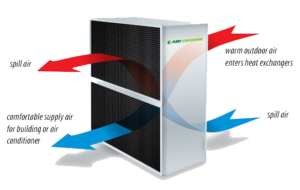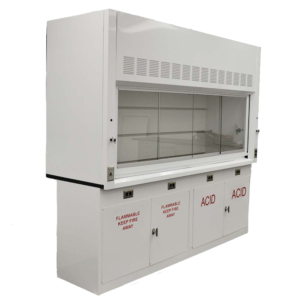Fume hoods are constantly exhausting air away from the laboratory while forcing clean air back in. This continuous cycle can result in a single fume hood consuming as much energy as 3-4 homes in a year. Laboratories with more than one fume hood face even higher energy consumption and operating expenses. To keep expenses low, follow these energy-conserving tips.
Turn it off
As with many appliances, you should “turn off” your hood when it’s not in use. While you can’t actually turn a fume hood off, there are a few steps you can take to make sure that it isn’t exhausting as much energy when you aren’t using it.
– Turn off your fume hood’s occupancy switch when it’s not in use.
– If the hood does not have an occupancy switch, reduce the exhaust on weeknights and weekends (or at times when the laboratory is not in use).
– If you have a fume hood that is no longer used, consider having it locked and decommissioned so that air no longer flows through it.
Shut the sash
A program dubbed Shut The Sash began at Harvard University as a means of reducing energy consumption and promoting sustainability. The program encourages laboratory personnel to keep the sash closed when the hood isn’t in use.

Maintain consistent airflow
Fume hoods exhaust air whenever they are functioning. If a fume hood exhausts more than the amount of air entering the laboratory, it can be overworked. By exhausting air from the fume hood and simultaneously pulling in outside air, the hood is acting as the facility’s HVAC system. This extra work will lead to additional costs. If this is happening, an HVAC technician should be consulted.
Invest in an energy-recovery device
As fume hoods move mass quantities of air, laboratories experience high air-change rates. An HVAC system with an energy-recovery device can reduce the energy needed to condition this air. But with no energy-recovery device, the HVAC system will be responsible for making up the difference. These two systems can work together for optimal efficiency by providing efficient energy recovery in the laboratory and the fume hood exhaust.

Optimize the hood’s position
The placement of a fume hood within a laboratory will affect airflow and thus affect energy efficiencies. Fume hood placement should be done with safety and performance in mind. Energy efficiency will differ whether the hood is placed in the center of a laboratory, in the corner, or in a secluded area. These options should be considered based on the needs of the laboratory and the fume hood. Often, placement is determined by safety and ductwork needs. But to obtain optimal efficiency, a fume hood should be strategically placed within a laboratory to work with other airflow systems.
Fume hoods cost a lot of money to operate. However, if you take the right steps to ensure that your hood is using as little energy as possible while still maintaining the safety of the user, you can reap significant energy savings.


